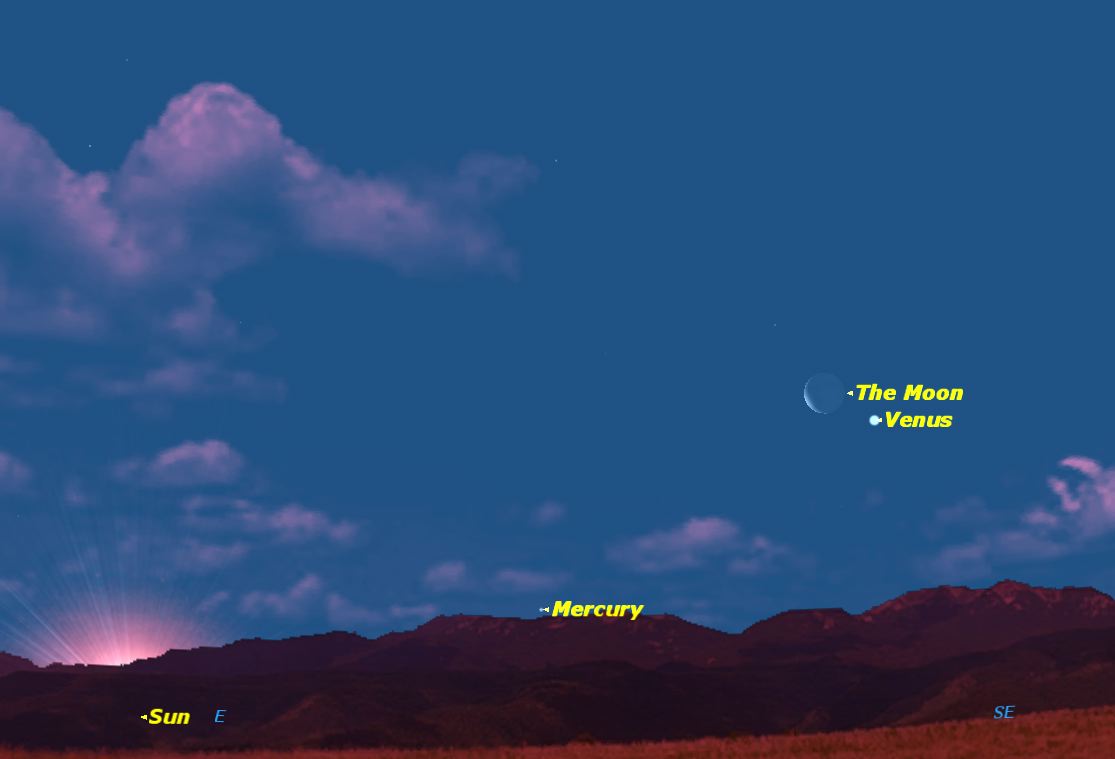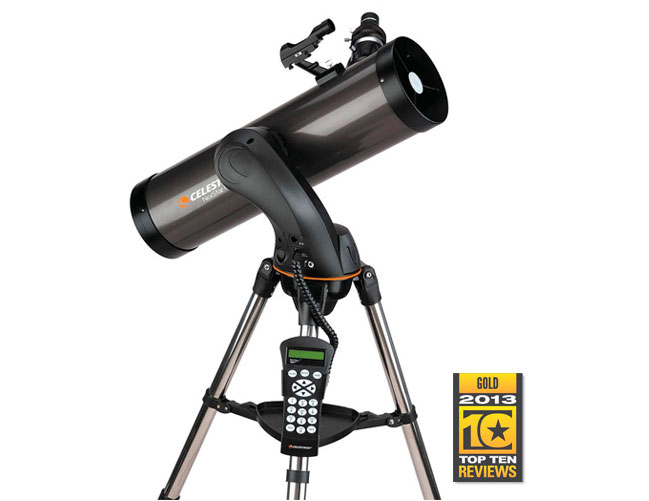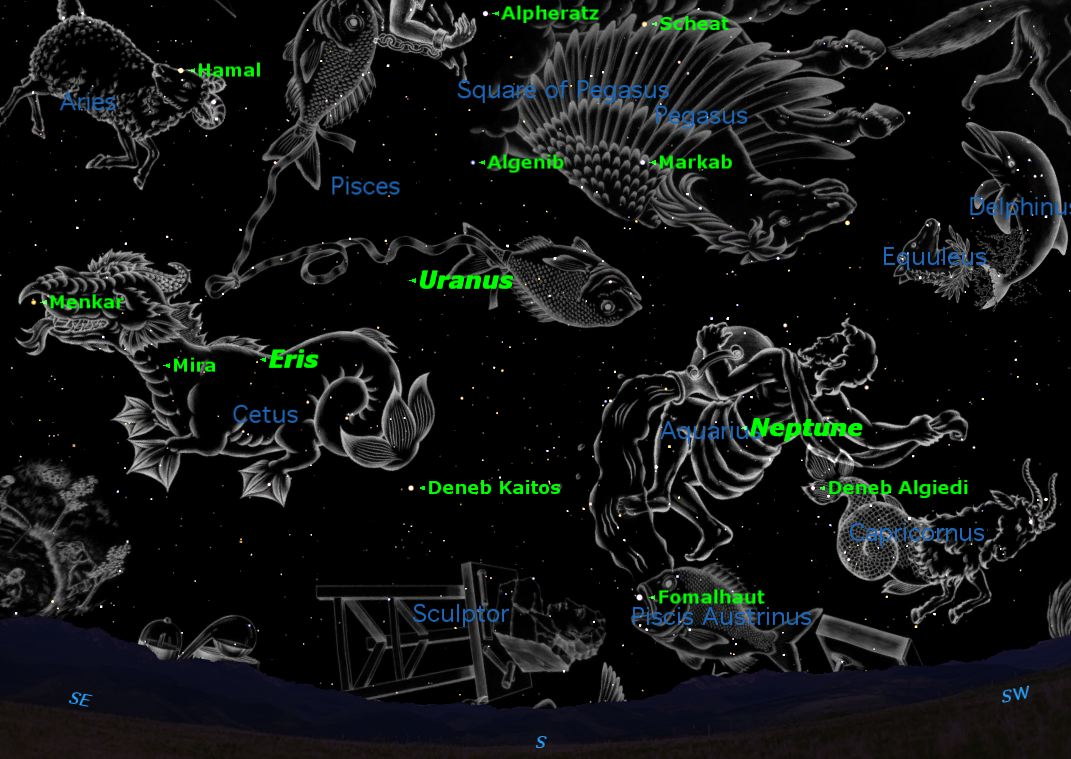March Stargazing: Jupiter and Gemini Twins Shine While Asteroids Fly By

March brings a wealth of amazing night sky events, so stargazers should be able to easily spot Jupiter and the Gemini twins among the planets and spring constellations this month, weather permitting.
Some observers may even see a rare event: an asteroid blocking one of the brightest stars in the night sky. The asteroid will pass in front of Regulus on March 20, making the bright star seem to temporarily disappear. Earlier this week, three small asteroids buzzed close by Earth, coming closer to our planet than the orbit of the moon. But none of the asteroids posed a threat to Earth.
This month, the solar system's biggest planet, Jupiter, continues to dominate the night sky, shining high above the southern horizon after sunset in the northern hemisphere. Its dark-colored bands should be visible through a telescope this month, officials with the Hubble Space Telescope's Space Telescope Science Institute (STSI) explained in a March skywatching video.

Later in the evening, Mars rises in the east and should be visible throughout the rest of the night with an unaided eye. Saturn, meanwhile, will climb into the sky by midnight and stick around until sunrise, with its rings visible through a telescope. [Stunning March Night Sky Photos by Stargazers (Gallery)]
"Before the sun rises, turn to the east to see Venus blazing over the early morning horizon," STSI officials said.
Mercury, the innermost planet in our solar system, always appears to be in the same general direction as the sun from our vantage point on Earth, which can make it difficult to spot. According to legend, Nicolaus Copernicus lamented on his deathbed that he never observed the elusive planet. But for observers in the southern hemisphere, March 14 brings a chance to see Mercury in the morning sky. On this day, the planet will be at its greatest elongation.
"Look about half an hour before sunrise, and you will see Mercury half way between brilliant Venus and the horizon, framed by first magnitude stars Altair and Fomalhaut," explains astronomer Geoff Gaherty with Starry Night Software, a Space.com columnist who operates the Foxmead Observatory in Coldwater, Ontario, Canada.
Get the Space.com Newsletter
Breaking space news, the latest updates on rocket launches, skywatching events and more!
The constellations of spring will also make their first appearances.

High overheard, stargazers should be able to see two bright stars of the Gemini twins, representing the heads of brothers Castor and Pollux of Greek mythology. A fuzzy patch near the feet of the twins is a cluster of hundreds of stars known as M35. Meanwhile, Cancer, the crab constellation, will shine in dark skies.
"It is a much dimmer constellation than Gemini, and hard to see in light-polluted skies," STSI officials said in a video. "Within Cancer lies the lovely Beehive Cluster. Ancient stargazers called it 'the cloudy star.' This large cluster contains hundreds of stars and lies about 577 light-years away from us."
An asteroid will pass by the bright star Regulus early March 20, briefly blocking the star's light in what astronomers call an occultation. The rare event will occur at 2:05 a.m. EDT when the 45-mile-wide (72 kilometers) asteroid Erigone passes in front of the star, according to the International Occultation Timing Association. It will only be visible over a narrow path starting over Long Island, New York, through Kingston, Ontario.
Editor's Note: If you snap an amazing night sky photo or video and would like to share it with SPACE.com for a possible story or gallery, please send images and comments (including your name and the photo's location) to managing editor Tariq Malik at: spacephotos@space.com.
Follow Megan Gannon on Twitter and Google+. Follow us @SPACEdotcom, Facebook or Google+. Originally published on Space.com
Join our Space Forums to keep talking space on the latest missions, night sky and more! And if you have a news tip, correction or comment, let us know at: community@space.com.

Megan has been writing for Live Science and Space.com since 2012. Her interests range from archaeology to space exploration, and she has a bachelor's degree in English and art history from New York University. Megan spent two years as a reporter on the national desk at NewsCore. She has watched dinosaur auctions, witnessed rocket launches, licked ancient pottery sherds in Cyprus and flown in zero gravity on a Zero Gravity Corp. to follow students sparking weightless fires for science. Follow her on Twitter for her latest project.









